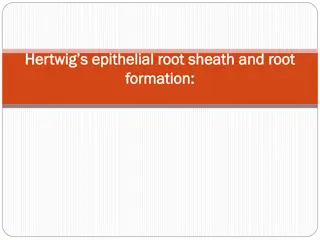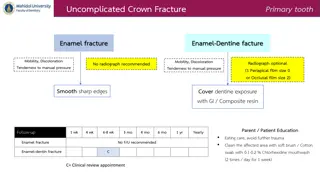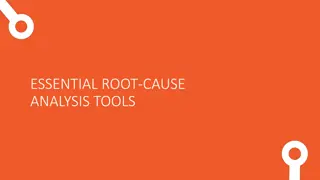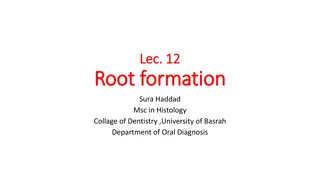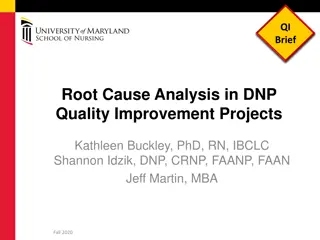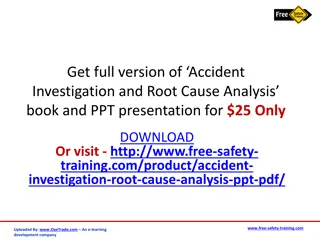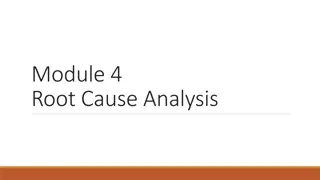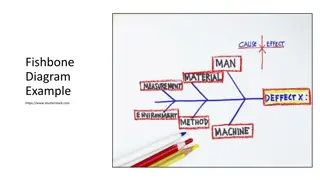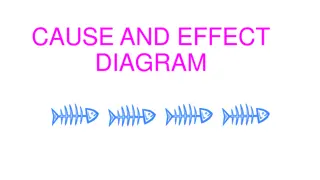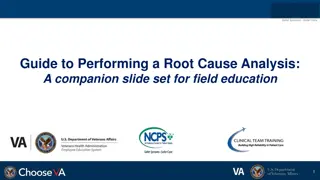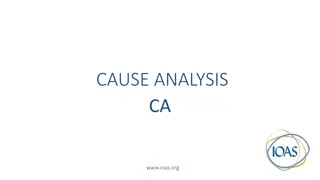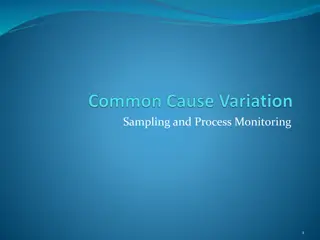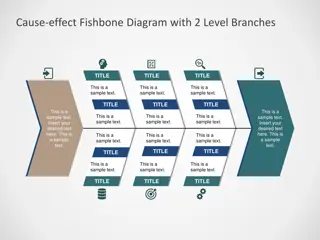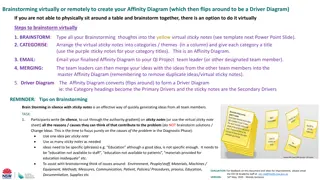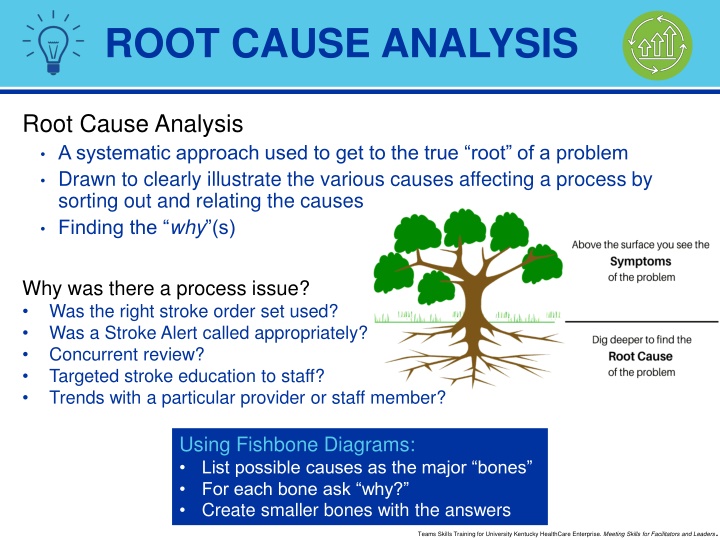
Effective Root Cause Analysis Techniques in Healthcare
Discover the power of Root Cause Analysis in healthcare processes, with a focus on identifying and addressing underlying issues using methodologies like Fishbone Diagrams. Explore root cause types, communication factors, and actionable plans to enhance patient care.
Download Presentation

Please find below an Image/Link to download the presentation.
The content on the website is provided AS IS for your information and personal use only. It may not be sold, licensed, or shared on other websites without obtaining consent from the author. If you encounter any issues during the download, it is possible that the publisher has removed the file from their server.
You are allowed to download the files provided on this website for personal or commercial use, subject to the condition that they are used lawfully. All files are the property of their respective owners.
The content on the website is provided AS IS for your information and personal use only. It may not be sold, licensed, or shared on other websites without obtaining consent from the author.
E N D
Presentation Transcript
ROOT CAUSE ANALYSIS Root Cause Analysis A systematic approach used to get to the true root of a problem Drawn to clearly illustrate the various causes affecting a process by sorting out and relating the causes Finding the why (s) Why was there a process issue? Was the right stroke order set used? Was a Stroke Alert called appropriately? Concurrent review? Targeted stroke education to staff? Trends with a particular provider or staff member? Using Fishbone Diagrams: List possible causes as the major bones For each bone ask why? Create smaller bones with the answers Teams Skills Training for University Kentucky HealthCare Enterprise. Meeting Skills for Facilitators and Leaders.
FISHBONE DIAGRAM TEMPLATE Category Category Category Category Category Insert text here Insert text here Insert text here Insert text here Insert text here Insert text here Insert text here Insert text here Insert text here Insert text here Insert text here Insert text here Insert text here Insert text here Insert text here Insert text here Insert text here Insert text here Insert text here Problem Insert text here Insert text here Insert text here Insert text here Insert text here Insert text here Insert text here Insert text here Insert text here Insert text here Category Category Category Category Category Fishbone (Ishikawa) diagram is cause-and-effect diagram that helps track reasons for imperfections, variations, defects, or failures.
TJC: ROOT CAUSE ANALYSIS AND ACTION PLAN
TJC: ROOT CAUSE ANALYSIS AND ACTION PLAN Root Cause Types Communication factors Causal Factors / Root Cause Details providers Communication during handoff, transition of care Language or literacy Availability of information Misinterpretation of information Presentation of information Noise, lighting, flooring condition, etc. Space availability, design, locations, storage Maintenance, housekeeping Equipment, device, or product supplies problems or availability Health information technology issues such as display/interface issues (including display of information), system interoperability Availability of information Malfunction, incorrect selection, misconnection Labeling instructions, missing Alarms silenced, disabled, overridden Lack of process redundancies, interruptions, or lack of decision support Lack of error recovery Workflow inefficient or complex Fatigue, inattention, distraction or workload Staff knowledge deficit or competency Criminal or intentionally unsafe act Speaking up, disruptive behavior, lack of shared mental model Lack of empowerment Failure to engage patient Disruptive or intimidating behaviors Staff training Appropriate rules/policies/procedure or lack thereof Failure to provide appropriate staffing or correct a known problem Failure to provide necessary information Organizational-level failure to correct a known problem and/or provide resource support including staffing Workplace climate/institutional culture Leadership commitment to patient safety Communication breakdowns between and among teams, staff, and Layout: Event Description Root Cause Analysis - questions Corrective Actions Bibliography Environmental factors Equipment/device/ supply/ healthcare IT factors Task/process factors Staff performance factors Team factors Adapted from: Department of Defense, Patient Safety Program. PSR Contributing Factors List Cognitive Aid, Version 2.0. May 2013. Management/ supervisory/ workforce factors https://www.jointcommission.org/-/media/tjc/documents/resources/patient-safety- topics/sentinel- event/rca_framework_101017.pdf?db=web&hash=B2B439317A20C3D1982F9FBB94E172 4B Organizational culture/leadership



